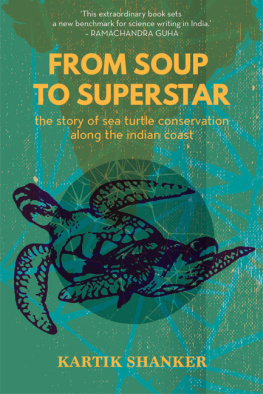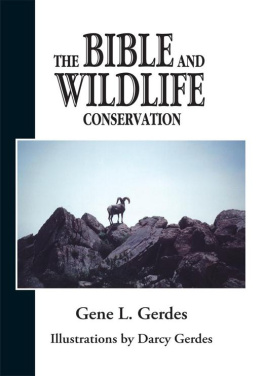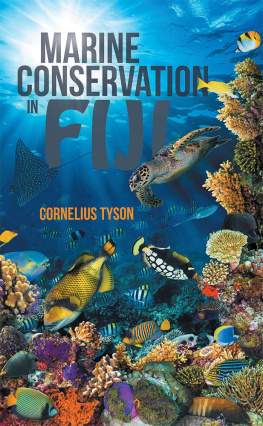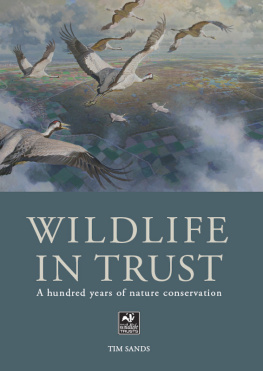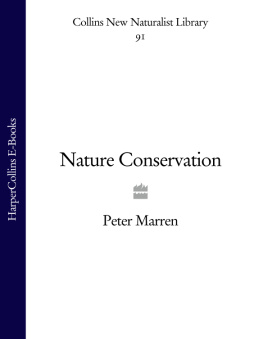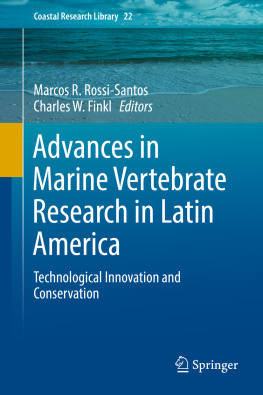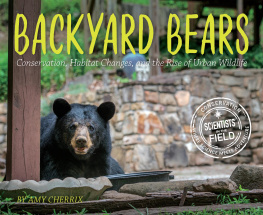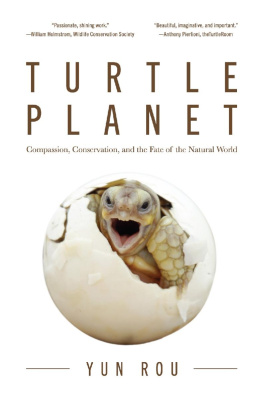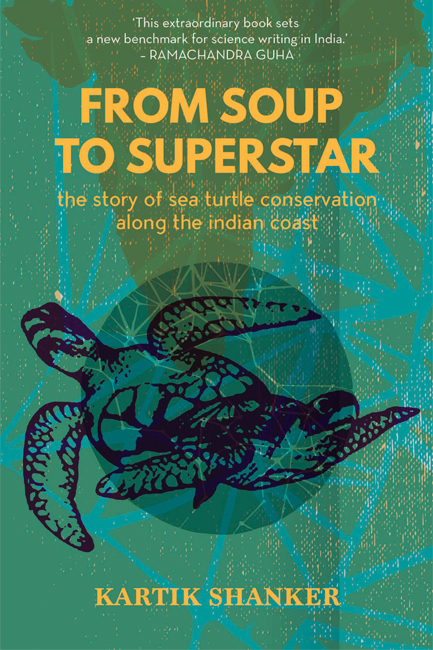
To Satish and Rom,
who inspired me to work on sea turtles
and
my parents, who gave me the freedom to be inspired
CONTENTS
PEOPLE ACROSS THE WORLD are fascinated by sea turtles today. Biologists, naturalists, lay persons, school children. The Annual Symposium on Sea Turtle Biology and Conservation, organized by the International Sea Turtle Society in various parts of the world, is attended by nearly a thousand people from over seventy countries. Thousands more are involved with sea turtles around the world. Given that there are only seven species of sea turtles, this group attracts more attention than almost any other. Consider that these creatures appear only briefly on land to nest, and then disappear quietly into the oceans for years. The enigma, the mystery, the frustrating inability to find out more.
While some of us remain passionate about understanding sea turtle biology, others dedicate their lives to saving sea turtles. But the domains of biology and conservation intersect more significantly in the sea turtle world than perhaps for any other animal group. By this, I mean that many if not most turtle biologists are involved in, or interact with, some aspect of conservation, and vice versa. In India, sea turtle biology and conservation began almost simultaneously in Odisha and Chennai. While the former was a government-driven programme with the forest department at its helm, the latter was initiated by wildlife enthusiasts and has remained largely a voluntary, non-governmental effort.
Five species of sea turtles are found in Indian waters. These include the olive ridley, green, hawksbill, loggerhead and leatherback turtles. Olive ridleys nest along both coasts of mainland India and on the offshore islands, including the Lakshadweep Islands in the Arabian Sea and the Andaman and Nicobar Islands in the Bay of Bengal. A few thousand ridley turtles nest annually in the states of Tamil Nadu and Andhra Pradesh; and over a hundred thousand turtles nest most years during mass-nesting events, or arribadas, in Odisha. The lagoons of the coral atolls of the Lakshadweep are excellent foraging habitats for green turtles. They also nest in large numbers on uninhabited islands such as Suheli. The Andamans provide excellent feeding and nesting habitat for both hawksbill and green turtles, while the Nicobars have some of the best leatherback nesting beaches in this part of the Indian Ocean.
On the Indian coast, as elsewhere, sea turtle populations are threatened by a combination of fishery-related mortality, habitat destruction (through sand mining, beach armouring and light pollution) and depredation of eggs. The increase in fishing intensity throughout India has resulted in large-scale incidental mortality of sea turtles, drowned in fishing nets. From December to March each year, thousands of turtles wash up dead on the Odisha coast. At the same time, a large number of ports are being built along the coast of Odisha and other states. These, along with other forms of coastal development, probably pose even greater threats to the sea turtles which nest here. And then, there is the ever pervasive threat of climate change, which can affect sea turtle populations not only through rise in sea levels and extreme weather events that affect nesting beaches, but also through warming that can alter hatchling sex ratios.
It is against this background of constant threat from fisheries, coastal development, climate change and egg depredation that biologists and conservationists have worked on sea turtles over the past few decades. The histories of both disciplines are rich not only with stories of frustration and failure, but also extraordinary effort and the occasional success. And the satisfaction of a biological story discovered. This book pays homage to that history, focusing on the conservation of olive ridley turtles in particular.
In this narrative, I hope to provide a historical and contemporary account of sea turtle conservation and biology in India. All the references and citations are listed at the end of the book (marked by regular numerals). The minority that are academics and scholars (read geeks like me) will find this useful. I advise the rest of the sane world to read without interruption, but some of the articles that I have cited and quoted are fascinating and worth following up on later. Most of the literature on sea turtles in India is available on the website Sea Turtles of India ( www.seaturtlesofindia.org ). I have also provided some notes (marked by roman numerals) at the end of each chapter which provide additional detail or interesting diversions. Each chapter is organized in roughly the same way, starting with a personal anecdote, followed by a detailed narrative of the subject of the chapter, an account of some of the key characters, some general theory of biology or conservation and a conclusion. The author is not responsible for deviations from this format; turtles are responsible for all digressions in this world.
Juvenile frenzy
A TINY HATCHLING SCRAPES open its egg shell with its little egg tooth and a sharp thumb claws on each front flipper, and scrambles out into a sandy world. Two inches long and weighing less than twenty grams, it is one-and-half feet below the sand and finds itself in the company of a hundred other pushing, heaving hatchlings. The hatchlings wait quietly as their siblings proceed to shed their calcareous coats. A while later, the temperature drops, and so it must be night in the outside world, dark enough for the freedom run to the sea. As they start moving about energetically, the sand slowly filters down, the nest collapses, and the hatchlings find themselves moving towards the surface together. They emerge en masse and wait but briefly to determine the brighter horizon, the sea with the moon and stars reflecting off its surface, and then rush and tumble down the slope, feel the beating of the waves ahead of them and all of a sudden, they are in the water where they belong.
In seconds, other instincts kick in, and the hatchlings dive under the incoming waves and ride out with the current. Their first response is to swim against the waves, and this ensures that they reach offshore waters. The yolk sac that they have absorbed in the days after hatching and prior to emergence from the nest gives them the energy to swim without pause for a few days, and this juvenile frenzy increases the chance that they reach safe havens in the sea. By the time they catch offshore currents and find seaweed rafts, the hatchlings have become oriented to the earths magnetic field and this enables them to maintain their direction. Those who survive the dogs, crabs, ants and numerous other predators on the beach, and then the fish and seabirds that have waited to feast on them in nearshore waters, will essentially be at the mercy of oceanic currents for the next ten to twenty years of their lives. Perhaps one in a thousand will survive to adulthood and join other adults at a feeding ground thousands of kilometres from the place where they hatched. When they have matured, the males and females will use the earths magnetic field and other cues to migrate back to their natal beaches to breed and nest and start the cycle again, as they have done for millions of years.
In 1988, more than twenty-five years ago as I write this, I was a second-year Zoology student at the Madras Christian College, quite unaware of the reptile rituals that occurred just a few metres from my house by the beach. I heard about the turtle walks and, after learning that this was not some peculiar collegiate ritual, decided that this was a diversion worth pursuing. We started each night on Besant Nagar beach and walked along the seashore looking for turtles or their tracks, reaching Nilankarai, 7 km south, by midnight or later. That year, the forest department had a hatchery on the beach where we slept till the morning.
Next page
